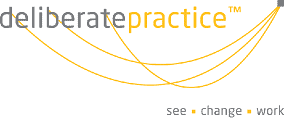The World Economic Forum recently published their report titled, “The Industry Gender Gap – Women and Work in the Fourth Industrial Revolution”.
This report has resulted from an extensive survey of CHROs and other senior talent and strategy executives from a total of 371 leading global employers, representing more than 13 million female and male employees, across 9 broad industry sectors, in 15 major developed and emerging economies and regional economic areas.
The report contends that although women are, on average, more educated than men globally and now participate more fully in professional and technical occupations than 10 years ago, as of today, their chances to rise to positions of leadership are only 28% of those of men. Women continue to make up less of the labour force overall than men, and where they participate in the formal economy their earnings for similar work are lower. Perhaps unsurprisingly, the Report also finds that tapping into the female talent pool is increasingly regarded as a prominent and promising area for workforce planning. Moreover, greater than a quarter of companies surveyed identified female talent as a key feature of future workforce strategy.
Overall, respondents reported the top 5 barriers to gender parity to be:
- Unconscious bias among managers (44%)
- Lack of work-life balance (44%)
- Lack of role models (39%)
- Lack of qualified incoming talent (36%)
- Women’s confidence, aspirations (31%)
Overall, the Report states that 53% of the survey respondents consider promoting women’s participation as a priority item on their organisation’s senior leadership’s agenda and 58% are confident about the efficacy of their current measures undertaken in this regard.
Suggested approaches to closing the Gender Gap
The report cites the following six suggested dimensions around which to focus an organisation’s gender parity efforts drawn from The World Economic Forum’s online Repository of Successful Practices for Gender Parity pools:
Measurement and target setting: Set achievable, relevant recruitment and retention targets at all levels, with an embedded accountability mechanism, is critical.
Leadership and company commitment: The chief executive and top management providing visible leadership in supporting women in management is one of the most important levers for progress in achieving gender diversity in a corporate context.
Responsibility beyond the office: Leveraging the opportunity to exercise external influence along the value chain, including diversity training for suppliers, distributors and partners and training to support women-owned businesses in the organisation’s value chain.
Mentorship and training: Promoting guidelines on the value of diversity as an underlying culture of the organisation, and impart knowledge on how to manage a more diverse workforce and how to attract, retain and promote female talent.
Awareness and accountability: Building awareness for the case for change and driving accountability of the senior management and transparency of career paths and opportunities are effective practices.
Work environment and work-life balance: Ensuring smooth on and off ramping and appropriate childcare options, and developing guidelines on implementation of work-life balance policies and mentoring for women going through a transition are important levers to ensure a sustained career progression towards management.
Summary
The report argues that “the moral case for gender equality has, in the most part, been won and that the business and economic case is increasingly understood”; and concludes by highlighting that, “The Fourth Industrial Revolution now presents an unprecedented opportunity to place women’s equal participation in the workplace at the heart of preparations for the shifts to come”.
Please click here to access the Executive Summary of the “The Industry Gender Gap – Women and Work in the Fourth Industrial Revolution” – World Economic Forum, January 2016.



